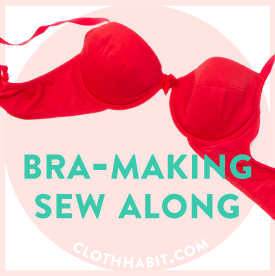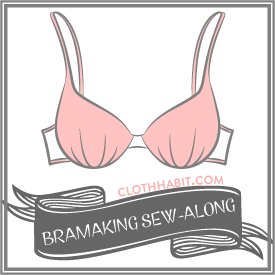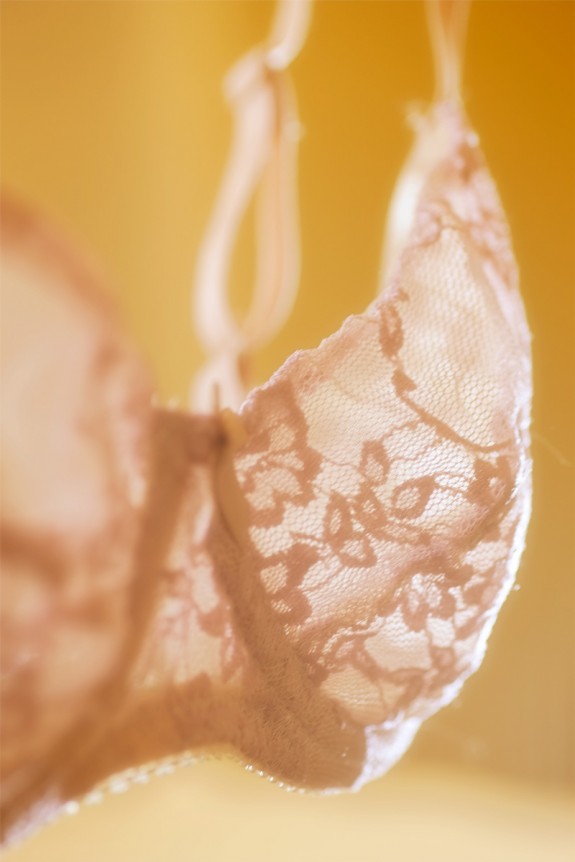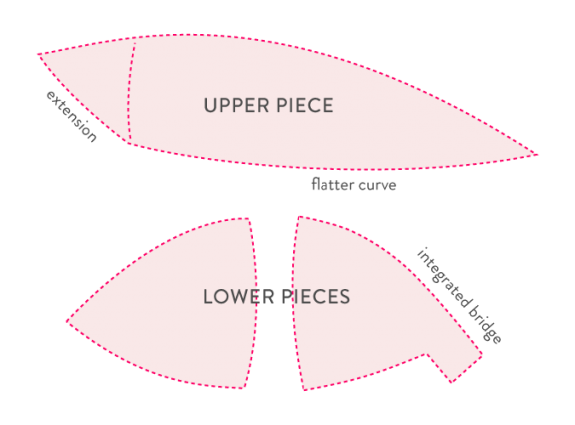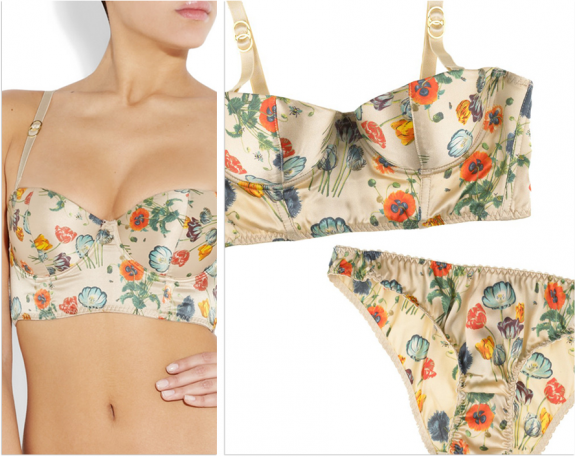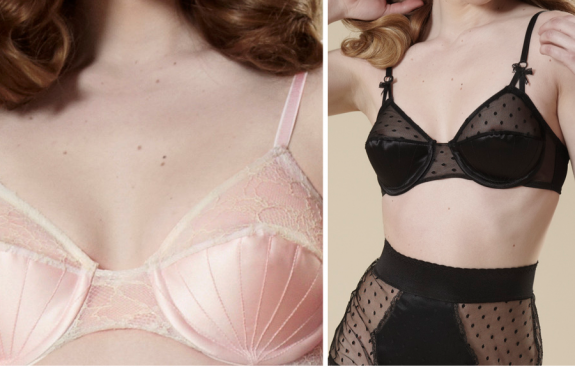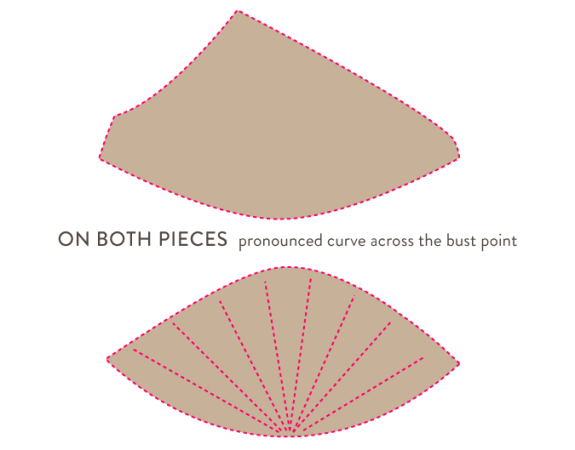Alrighty, today let’s talk through pattern options! I know there are a lot of patterns out there, and in the end each one of you will have a unique preference for shape, style and materials. But I want you all to leave with a feeling of accomplishment! Yes, you can make a bra. So for the sake of simplicity and ease of teaching, it’d be ideal if we were working from the same or similar pattern.
The most basic bra pattern is a two-piece cup with a band that runs under the cups. And this is usually the pattern block from which all other bra designs originate! So I’ve narrowed down the wide world of pattern options into a few that would make for a good first bra-making experience, and which can be sourced from more than one store:
Pin-up Girls #1200 (Classic Bra)
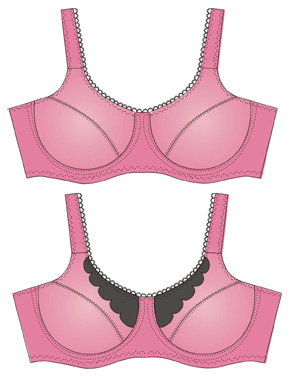
Pin-up Girls #1200 (Classic Bra). This is my favorite basic bra pattern. The grading covers a lot of sizes–all the way down to a 30AAA as well as sizes for narrow band and large cups (up to 30H/I). Available: Bra-makers Supply, Elingeria. Update: Bra-makers Supply now has a shop on Etsy (no kits/fabrics, just patterns).
Elan 645

This is also a very nicely-drafted pattern with a wide range of sizes and is constructed much like the Pin-up Girls pattern. Available: Elingeria, Sew Sassy, Fabric Depot Co., Bonnie’s Pattern Shop (ebay), Vena Cava Design (UK).
Option for larger sizes:
Danglez DB4
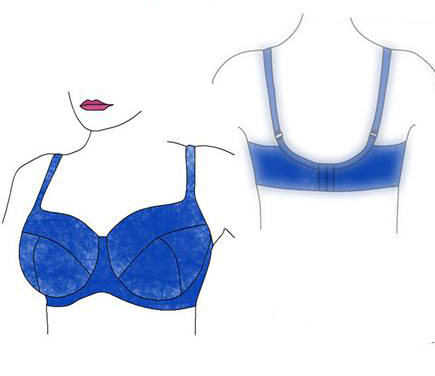
This might be a good option for those who need more coverage, especially around the underarm. If you run above an E/DD especially with a smaller band, try Danglez DB3–this one sizes into the I cups and has what’s often called a “powerbar” seam along the side of the cup for support. Available: Elingeria, Danglez (apparently her shop is going to close so there’s a sale!).
Elan 520
This is very similar to the Elan 645 but is made for fuller band/cup sizes. Available: see the Elan pattern above for shops.
![]()
You might notice I left out a lot of popular patterns, but I did so because they either have limited size options (Merckwaerdigh, Kwik Sew), limited or specific underwires that won’t be easy for everyone to buy (Make Bra, which uses long underwires and often the same underwires for several cup sizes), or special construction techniques. That includes all partial band patterns, because they are constructed a bit differently and I won’t have time to cover both.
Truly, a basic pattern goes a long way. The tack I’d like to take in this sew-along is to share some ways to modify a bra pattern to your liking–changing the neckline shape, softening the curves, changing the seaming. I’m going to make a very simple version of the Pin-up Girls pattern with few frills and then a modified version with lace and some easy shaping alterations.
![]()
Some questions that came up:
Can I leave out underwires?
Yes–with these patterns you can make a supportive bra without them.
Will you make a foam-cup bra?
No, I won’t be making one in the sew-along, but I have a little treat waiting in the wings for some time in February. I’ve written a tutorial showing how I adapted my pattern for foam shaping. (A bra which I haven’t blogged about!)
Just as an FYI, there are two types of foam cup bras: those that use pre-molded cups (usually seamless t-shirt bras) and those that use pieced and sewn foam. The pre-molded cups seem to work best using a pattern specifically designed for them. The latter are sometimes called “cut and sew” bras and use what’s called polylaminate or spacer foam as a lining. (The Make Bra patterns are built around this lining.) Any pattern can really be adapted for it. They’re fun to make because you can use just about any fabric on the outside of the cup without worrying about support. Some of my best RTW bras have this type of lining and I might offer some suggestions later on the sew-along, but if I do it’ll be short and sweet. If this is your first bra, I’d recommend getting used to basic construction without it, so you don’t fight with the foam!
Can I use my own pattern?
If you already have a pattern that fits, or your own personal block, chances are you already have a head start and can follow along for whatever parts you want to follow! I can’t address the particular techniques of your pattern, however. But if it’s similar enough you’ll have no problem and perhaps others can chime in with help!
I hope that covers it! I’ll be back next week with a bit about sizing and materials and then we can start our shopping.



